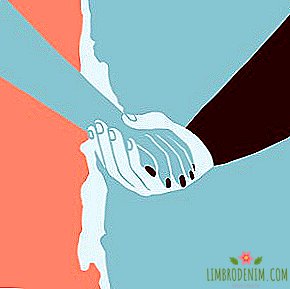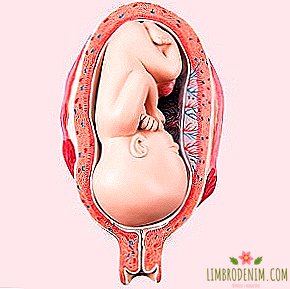Artist Rachel Lee Hovnanian about GMOs and beauty queens
Like smartphones and others Do digital tools turn us into experimental rats and change our behavior and perception of beauty? On October 8, the Plastic Perfect exhibition of Rachel Lee Hovnanian, an American artist, opened at the Pechersky Gallery. She noticed that she was addicted to her smartphone and explored the impact of technology on modern society and human relationships. Rachel told us about the residents of New York, buried in iPhones, millions of albino mice and beauty as a source of power.
 When did you become interested in the influence of technology on modern society?
When did you become interested in the influence of technology on modern society?
Two and a half years ago I had an exhibition "Mud Pie", dedicated to technologies and the fact that in the modern world real things and phenomena are replaced by artificial ones. Then I continued my research and then I noticed that I was dependent on my smartphone. That is why I decided to find out how technologies change our daily lives and, most importantly, relationships.
I realized that I did not even notice how I used my phone. I always take it out when I feel a little uncomfortable, for example, when I stand in a queue, I look into it to check my email or look at pictures on Instagram. I think everyone is starting to notice that we are looking at a smartphone, not realizing that we are actually doing this. In every city on earth, and especially in New York, because it is a city of pedestrians, it is noticeable that people on the streets cannot tear themselves away from their phones, it becomes an extension of you, something like another brain. I'm not sure that I can live at least one day without my smartphone. My family sometimes tells me that I behave like the heroes of my installations, and I always get scared and answer: "Oh God, I do not look like them!" - although this, of course, is not true. It is difficult to identify with such people.
My exhibition "Plastic Perfect" is dedicated to our relationship with smartphones, which become for us something like teddy bears. It scares me that we often prefer the smartphone to live communication and we like to talk to those who are not close. True, despite the many shortcomings, the technology has advantages. Now everyone can express themselves, for example, with the help of Instagram, and so many authors who work with digital technologies appear. It's great that today such a large number of people can become artists, do amazing things and discover their creative sides.
 Your work is reminiscent of images from glossy magazines. Why did you choose such a visual language?
Your work is reminiscent of images from glossy magazines. Why did you choose such a visual language?
I like clean, "light" images, it works well, because I want to make people look at my work. Then they understand the topic and immerse themselves in it. For me as an artist, it is important to provoke a discussion, but first I want to draw attention to my works with the help of something visually attractive and inviting the viewer to participate. Very often people pass by the works of conceptual art, not understanding what they mean, and I try to avoid it by inviting a person to engage in dialogue.







 Tell us how you prepared for the exhibition "Plastic Perfect". In one of the interviews you said that you even worked with doctors and scientists to create some installations.
Tell us how you prepared for the exhibition "Plastic Perfect". In one of the interviews you said that you even worked with doctors and scientists to create some installations.
Yes, to create an installation "Perfect Baby Showroom", which is a store of perfectly healthy and beautiful children, I consulted with geneticists and psychiatrists and read a lot - for example, I was impressed with the books of MIT professor Sherry Turlk, who writes about the positive and negative consequences the impact of technology on our lives. I tried to look at different points of view.
 The kids' figures you created for the "Perfect Baby Showroom" look scary. Should we be afraid of the technological future?
The kids' figures you created for the "Perfect Baby Showroom" look scary. Should we be afraid of the technological future?
It seems to me that in the future we are waiting for both good and bad. We can cure diseases and help people to have children - and that's great. It’s scary what will happen to our society if we get the opportunity to choose which children we want to have, to “program” their genes - this is a bit strange, because we have never seen anything like this. Genetically modified children - good or bad? I do not know, but I hope that I can invite viewers to discuss this problem through their work.
During the preparation of the exhibition, I learned that albino mice used to be rare, they are very rare in nature. Now, thanks to genetic engineering, there are millions of such mice. We perceive it as a norm - it seems to us that these are ordinary mice, although this is very rare. I do not know, but it seems to me that we become similar to these experimental mice, because every time we turn on the computer or use a smartphone, we are monitored and information is collected. That is why I am interested to know what will happen in the future.
 Is there anything special about being a female artist in the art world where there are so many men?
Is there anything special about being a female artist in the art world where there are so many men?
My mother was a feminist and always said that I can achieve everything I want. I do not think that I somehow differ from men, and I do not think that sex plays any role, except for the fact that I can be a mother and I have children. My mother painted pictures and was friends with many artists, so as a child I spent a lot of time in their studios. I became an artist because I was always interested in art, painted and made sculptures from early childhood, because it always brought me joy. I never thought I could do anything but that.



 What topics besides technology excite you the most?
What topics besides technology excite you the most?
I am interested in narcissism, I see how people around me behave and how I behave myself. We are taught that beauty can be a source of power. I spent most of my life in Texas, where beauty is exalted through beauty contests and where everyone wants to be a beauty queen. When my family moved to Texas, my parents told me not to pay attention to all this, beauty doesn't matter, much more important is what is in your head. I agreed, but I understood that we live in a world where visual culture is so important and everyone involuntarily pays attention to appearance.
My exhibition "Power & Burden of Beauty" is dedicated to the influence of modern society on men and women who are obliged to constantly think about how they look. I did not want to condemn anyone with this project, my goal, as always, was a dialogue about this issue. When this exhibition traveled to different cities and I participated in beauty discussions, I learned that many girls in their youth were pressured by their mothers, because they wanted to somehow influence how they looked. I have never encountered this and did not think that such a phenomenon exists.
 Do you feel pressure on yourself?
Do you feel pressure on yourself?
Yes, it seems to me now it is stronger than ever, because with the advent of technology, visual culture has become even more important and everyone can create their avatar in the virtual world today: everyone has social network accounts and hundreds of profile pictures.
 What technologies do you use yourself to create your work?
What technologies do you use yourself to create your work?
Yes, I constantly use new technologies for my videos and performances. For example, during the Mud Pie exhibition, there was a performance in the gallery, during which you could communicate with an actress playing as a saleswoman in a Texas café via Twitter - it seemed to people that she was a real person, but in fact they communicated simply with an avatar. With the help of technology, I wanted to create a realistic environment, which in fact was completely artificial: in the cafe you could buy, for example, coffee that had the usual taste, but in fact it was made from chemicals that allowed the drink to be stored for a long time.
Photo:Rachel lee hovnanian




